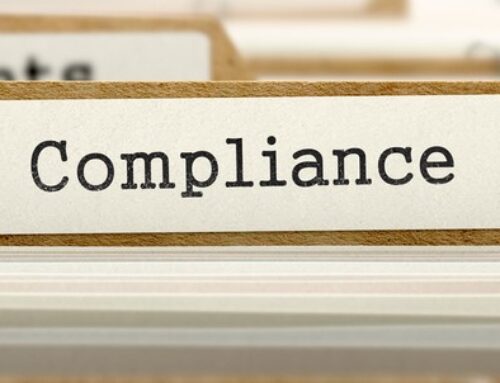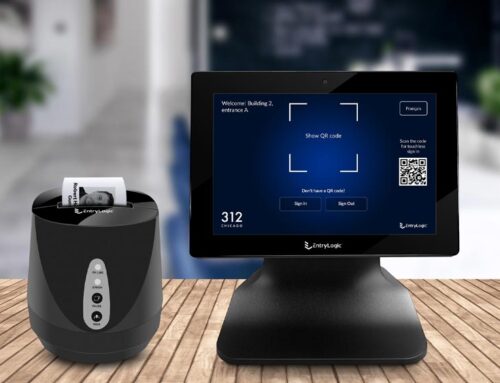As the world starts to return to pre-COVID activities, many companies are excited to bring employees back into the workplace and resume their collaborative work. Managing workplaces has always been a big undertaking, but now there are many additional health and safety considerations that employers are responsible for. Now is the time to reevaluate your office management to make sure everyone in your building is safe and accounted for. A smart return to work plan will help minimize confusion as you return and help you drum up excitement to be in the office again.
Preparing Your Office and Employees
The Importance of a Return to Work Policy
When bringing your employees back to the workplace, it’s necessary to communicate events and guidelines clearly. A return to work policy can help you communicate dates, details, guidelines, and more effectively. When you set clear expectations, you’ll notice a much smoother transition to in-person or hybrid work.
A return to work policy and message is also a good opportunity to share why you’re making the return to the office, what benefits you see, and how you’ll welcome people back. It’s good to create excitement and enthusiasm for your return plans early on to encourage employees to come to the workplace.
What to Include in Your Return to Work Plan
When creating your return to work plan, it’s important to include key dates, company expectations, and key people. Identifying important people like managers or department heads helps make the transition smoother with clear people to answer any follow up questions. You’ll also want to make sure you are able to solicit feedback from employees and listen to concerns as you roll out your plan.
Other considerations for your plan include specifics of your company policy, vaccination or mask requirements for your workplace, and address any hybrid or alternative arrangements.
How to Prepare Your Office
Your office preparations will follow the specifics in your return to work plan, but there are some situations you’ll need to prepare for. Think about what you’ll need to support your employees in the office, like adequate desk space and meeting rooms. Be sure to be mindful of any COVID guidelines that apply to your office — check your city and/or county’s current requirements as well as staying up to date on CDC guidelines.
For a more sophisticated and safe setup, you should have a way to clearly communicate company health policies and monitor who is in your workplace. This can go a long way in helping you protect your employees and keep everyone healthy. One of the best ways to track employee movement and monitor company health is with a visitor management system, or VMS. A VMS goes beyond tracking just visitors and can help you manage your employees with an online database to make sure everyone is safe. Features to look for include:
- Monitoring Visitors and Employees: Monitor your workplace and know who is present or expected to be in your facility at all times.
- Visitor Agreement: Talk to your visitors and communicate any general visitor guidelines and health-related requirements.
- Employee Log: Keep track of your employees so know which employees are present, expected, or not present.
- Contactless Sign In: Eliminate the need to touch a kiosk and protects your facility by reducing the potential transmission of germs.
- Detailed Reporting: Understand workplace attendance vs. capacity, and conduct contract-tracing as needed.
You should also consider how you want to welcome people back to the office as you prepare your workplace. Think about fun activities and perks you can provide to make in-person exciting after two years of remote work. Try incorporating things like free coffee, afternoon sweet treats, catered lunch once a week or more, or outings after work to build excitement.
How to Welcome Employees Back to Work After COVID
When you’re planning a return to work, communication is the most important piece. Take time to think about when and how you want to announce your return to work. It’s nice to have a human touchpoint for big announcements like this, so try announcing your return to the office in an all-company meeting or ask managers to share the news with their teams.
It’s important to give employees an advanced warning about the return to work and provide a firm date in the future. Committing to a date can help you plan, and give employees plenty of time to prepare. Even if you choose a date, try to be flexible based on community feedback. Be open to suggestions from your employees and think of some to respond to employee concerns, or have the flexibility to be able adjust your plans as the virus ebbs and flows.
Enticing Your Employees to Return
Get Excited
The excitement of your leadership team will dictate the tone of the return to work, so make sure you start off on a positive note. Many employees are not eager to go back into the office, but positive, compelling reasons to return can make it easier to entice people to come back. Make sure your return to work policy includes upbeat language and emphasizes the importance of your work community and office culture.
Adding Perks to the Workplace
One of the best ways to create excitement is to let employees reconnect with their coworkers on a personal level. A lot of the interpersonal relationships are lost with remote work, and going back to the office is a great way to have old and new employees get together. Consider sponsoring activities like:
- Designate lunch outing days, paid for by the company
- Mix up working spaces to collaborate with different departments/team members
- Designate days for specific teams to come in
- Provide freebies like coffee or sweet treats
- Set up after-hours events
- Promote hobby groups (bike outings, artistic events, concert attendance)
- Bike and car parking, or a commute stipend, to reduce the stress and costs of commuting to work.
There are many office perks that can help your employees reduce stress, save money, and address some of the benefits lost upon a return to work. In addition to those listed above, we recommend talking to your employees about which benefits or perks would be most valuable to them. Listen to what they say about the benefits of working from home, as well as the benefits they would like to see in-person, and discuss with your leadership team to determine the best ways to alleviate their concerns and support them upon this transition. With the mobility in the current job market, keeping your employees happy upon return to work is crucial to retaining your team.
***
As the world returns to pre-COVID normal, now is a great chance to bring employees together. The success of your return to work depends on your preparedness and your enthusiasm. Make sure employees are fully aware of your policies and have ample time to prepare, while putting a fun spin on the in-person reunion.
Health and safety is still a top concern, so make sure you keep an eye on your employees’ health and wellness. EntryLogic’s VMS can help you manage the return to work with features like touchless sign in and out for visitors and employees, visitor agreements, emergency management, and employee management. Get in touch with us today and learn more about how we can help you transition to a safe and secure in-person workplace.






